|
Advanced Sim Pilot Learning Enhance your Flight Simulator experience with King courses that will help you fly like a pro. You'll get valuable techniques and insider tips that will sharpen your pilot skills. |
|
|
|
|
| Single-Subject Courses | |
| Become an expert pilot! Each course focuses on a different area of flying that will enhance your Flight Simulator experience. | |
|
Cleared for
Flying the Garmin G1000
KING's Cleared for Flying the Garmin G1000 Computer-based Interactive Video™ course will prepare you so well that when you get in the airplane, your hands and eyes will automatically go to the right place. You'll not only understand and be able to use the fabulous capabilities of the glass cockpit G1000, but you will know the quickest and most efficient way to do things and how to avoid the gotchas that can lie in wait for the unprepared. Click here for more information 
|
|
Communications De-mystify "tower talk"
and feel in control on the radio. Through real-world
communications with actual controllers you'll learn first-hand
proper communication procedures, techniques to use in every
class of airspace, and how to get the cooperation you deserve
from ATC. Radio call-up procedures, correct radio terminology, and how to use
your radio for increased safety and utility are all there—including
communicating comfortably in Class B airspace, when and how to get a
Special VFR clearance, procedures for controlled vs. uncontrolled
airports—even the best way to resolve on-air disputes. A wealth of
pointers on issuing clear and professional communications. 110 minutes.
De-mystify "tower talk"
and feel in control on the radio. Through real-world
communications with actual controllers you'll learn first-hand
proper communication procedures, techniques to use in every
class of airspace, and how to get the cooperation you deserve
from ATC. Radio call-up procedures, correct radio terminology, and how to use
your radio for increased safety and utility are all there—including
communicating comfortably in Class B airspace, when and how to get a
Special VFR clearance, procedures for controlled vs. uncontrolled
airports—even the best way to resolve on-air disputes. A wealth of
pointers on issuing clear and professional communications. 110 minutes.Click here for more information |
|
Takeoffs and Landings Made Easy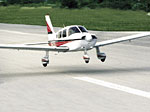 With this course takeoffs and landings will move from a trial to a joy.
You'll impress your passengers (and
yourself) with flawless takeoffs and landings even in stiff crosswinds.
Exciting live-action video puts you in the cockpit at the controls, giving
you the sight picture you need for approaches and flares that will have
your wheels softly kissing the ground. You learn how to see at a glance
whether you're too high, too low, or off to one side—and you'll gain the
tools you need to put yourself right back "on the rail." You'll even learn
how to recover gracefully from the rare botched flare or touchdown. When
you're done you'll be one of the countless King students who says, "I
learned to land by watching your course." 67 minutes.
With this course takeoffs and landings will move from a trial to a joy.
You'll impress your passengers (and
yourself) with flawless takeoffs and landings even in stiff crosswinds.
Exciting live-action video puts you in the cockpit at the controls, giving
you the sight picture you need for approaches and flares that will have
your wheels softly kissing the ground. You learn how to see at a glance
whether you're too high, too low, or off to one side—and you'll gain the
tools you need to put yourself right back "on the rail." You'll even learn
how to recover gracefully from the rare botched flare or touchdown. When
you're done you'll be one of the countless King students who says, "I
learned to land by watching your course." 67 minutes.Click here for more information |
|
VFR Cross-Country Flying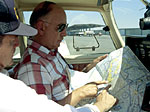 Get the real payoff from
learning to fly. Filmed over majestic terrain, this step-by-step guide to
planning and flying a fun, safe VFR cross-country trip is for seasoned and
new pilots alike. You'll learn hidden traps to avoid, tips to keep you out
of trouble, how to make navigation easy, ways to obtain and evaluate
weather while enroute, and a flight-tracking system—so you'll never get
lost! Plus, learn the most important consideration—and how to avoid the
most dangerous mistake. From checking the weather ahead to selecting and using your
Sectionals to identifying landmarks and checkpoints along the way, this
course gives you the "ultimate checklist" for efficient and effective
cockpit management. 119 minutes. Get the real payoff from
learning to fly. Filmed over majestic terrain, this step-by-step guide to
planning and flying a fun, safe VFR cross-country trip is for seasoned and
new pilots alike. You'll learn hidden traps to avoid, tips to keep you out
of trouble, how to make navigation easy, ways to obtain and evaluate
weather while enroute, and a flight-tracking system—so you'll never get
lost! Plus, learn the most important consideration—and how to avoid the
most dangerous mistake. From checking the weather ahead to selecting and using your
Sectionals to identifying landmarks and checkpoints along the way, this
course gives you the "ultimate checklist" for efficient and effective
cockpit management. 119 minutes.Click here for more information |
|
Navigation From
A to Z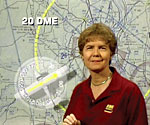 The way we navigate is changing. With GPS
and moving maps finding their way into our cockpits, our biggest concern
these days is no longer "How do I keep from getting lost?", but "How does
all this stuff work?" Here's the information you need to get the most out
of your equipment—whether you fly with a basic panel or an
approach-certified GPS. You'll see how pilotage, dead reckoning, and
determining lines of position are still valuable to you, even if you fly
with the most modern equipment. Learn things you never knew about VORs,
NDBs, and LORAN—and go beyond to fully explore the world of GPS, HSIs, RMIs,
EFIS, and flight management systems. 110 minutes.
The way we navigate is changing. With GPS
and moving maps finding their way into our cockpits, our biggest concern
these days is no longer "How do I keep from getting lost?", but "How does
all this stuff work?" Here's the information you need to get the most out
of your equipment—whether you fly with a basic panel or an
approach-certified GPS. You'll see how pilotage, dead reckoning, and
determining lines of position are still valuable to you, even if you fly
with the most modern equipment. Learn things you never knew about VORs,
NDBs, and LORAN—and go beyond to fully explore the world of GPS, HSIs, RMIs,
EFIS, and flight management systems. 110 minutes.Click here for more information |
|
IFR With Confidence Thinking about your Instrument ticket? Or
ready to brush up on your skills and know-how? Either way, this course is
jam-packed with solid information for your Instrument rating. Learn how to
deal with the most difficult IFR conditions—and how to avoid the pitfalls
for the unsuspecting pilot. You'll get invaluable tips about when to be
especially suspicious about the weather, the smart way to pick your IFR
alternate airport, and why you may not be getting the terrain clearance
you think you are on many IFR departures. Includes hints every pilot can
use for that tricky transition back
to visual flight references after a tight approach. 114 minutes.
Thinking about your Instrument ticket? Or
ready to brush up on your skills and know-how? Either way, this course is
jam-packed with solid information for your Instrument rating. Learn how to
deal with the most difficult IFR conditions—and how to avoid the pitfalls
for the unsuspecting pilot. You'll get invaluable tips about when to be
especially suspicious about the weather, the smart way to pick your IFR
alternate airport, and why you may not be getting the terrain clearance
you think you are on many IFR departures. Includes hints every pilot can
use for that tricky transition back
to visual flight references after a tight approach. 114 minutes.Click here for more information |
|
Complete
Jeppesen Chart Review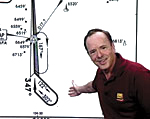 Enroute,
Departures, Arrivals, and Approaches Enroute,
Departures, Arrivals, and ApproachesAdd Safety to Your IFR Flights Like many pilots, you may have done your IFR training using government charts, but you prefer to fly with Jeppesen charts because you feel they offer you more information in a clearer fashion. Important differences you should know But the problem is you've never had any training on how to read the Jeppesen charts. And there are many differences in the way important things are shown. For instance the minimums section of an approach chart is entirely different in the Jeppesen version and can be confusing if you don't know how the sections are organized. The profile view on Jeppesen approach charts shows separate paths for ILS and localizer approaches, while government charts show them as one. Jeppesen approach charts sometimes show terrain, but do you know when? Can you recognize the difference between the ways NDBs are displayed on Jeppesen charts vs. government charts? How does each chart type depict time zone boundaries, uncontrolled airspace, and airports? How does each present MSA circles or ILS DMEs on a localizer frequency? These are all shown differently and it can get pretty confusing Having the answers at your fingertips might easily affect the safety of your IFR flight.  Clarifies,
simplifies, makes it easier to understand Clarifies,
simplifies, makes it easier to understandIf you use Jeppesen Charts, or are considering switching to them, you'll find King's Complete Jeppesen Chart Review course shows you the differences between Jeppesen and NOS charts in clear and easy-to-understand terms and makes your IFR flying easier and less stressful. Volume One thoroughly covers the ins and outs of enroute, departures & arrivals; Volume Two explores approaches in-depth. Created for pilots familiar with IFR procedures Each volume, created for pilots who are familiar with United States IFR rules, presents a review of the meaning of the symbols used on the charts—plus dozens of practical tips on how you can use the charts to their fullest advantage. Included in Enroute, Departures and Arrivals are how Jeppesen depicts the alphabet soup of IFR altitudes (MEAs, etc.), and the mysterious grid MORA. And even current IFR pilots may not be familiar with some of the new concepts you'll find in the volume on Approaches. 135 minutes. Click here for more information |
|
Multi-Engine Flying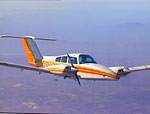 Step-up safely to bigger and faster Step-up safely to bigger and fasterIt's no secret, multi-engine aircraft are fast and they're fun. With greater power, bigger size, and more levers, knobs, and dials, they can deliver a thrill way beyond the pleasure of single-engine flight. But we all know twins can be dangerous if the PIC isn't properly trained and proficient. Fly through the basic do's and don'ts In this video series, join John and Martha as you fly through the do's and don'ts of safe multi-engine operation. John takes you into the cockpit of a Duchess and gives memorable aerial demonstrations of the basics of flight—and especially single-engine flight—in light twins. Here's what you'll learn: You'll learn what a twin engine airplane can do on one engine—and what it can't; how to maintain control while getting max performance on one engine; and how to handle emergencies you might encounter (even a few you may never have thought of). Multi-Engine Flying not only gives you the basic skills for stepping up to multi-engine flight—it polishes your airmanship and helps you make a seamless transition as you become the master of the aircraft. 144 minutes. Click here for more information |
|
|
Airport Signs, Markings &
Procedures: Your Guide to Avoiding Runway Incursions 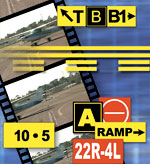 Understanding and correctly interpreting airport signs and markings
Understanding and correctly interpreting airport signs and markingsis essential to safe and problem-free maneuvering around an airport. Our CD-ROM course Airport Signs, Markings and Procedures: Your Guide to Avoiding Runway Incursions makes it easy for you to remember what action to take—or not take—when you taxi at any airport. Bite-sized Segments for Fast, Fun Learning Your CD-ROM course is arranged into eight bite-sized segments, starting with video and followed by interactive questions to test and reinforce your understanding. It's a fun way to really learn an important and often neglected aspect of flying. Your course segments include: Planning Your Taxi Route, Pavement Not To Be Used, Movement Area Markings, Airport Markings and Signs, Holding Positions, Taxiing Onto A Runway, Taxiing Off A Runway, and Uncontrolled Airports. 38 minutes. Click here for more information |
|
Taming Stalls and Spins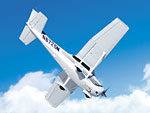 You'll quickly learn what causes a stall
... how it can transition to a spin ... how to instantly recognize and
avoid situations that might result in loss of control ... and steps to
take in a stalled condition. Dramatic
You'll quickly learn what causes a stall
... how it can transition to a spin ... how to instantly recognize and
avoid situations that might result in loss of control ... and steps to
take in a stalled condition. Dramaticin-flight video compellingly demonstrates the aerodynamics of stalls and spins during everyday flight. Understanding the nature of stalls and spins before you get in the cockpit makes it easier to recognize if you need to take action when you're in actual flight. A "must" for every pilot—regardless of your experience. 58 minutes. Click here for more information |
|
Maneuvers
for the COM/CFI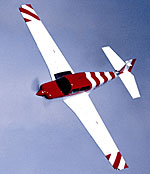 Pilot's point-of-view video and animated
graphics combine to teach you lazy-eights, chandelles, eights-on-pylons,
and other advanced maneuvers.
Pilot's point-of-view video and animated
graphics combine to teach you lazy-eights, chandelles, eights-on-pylons,
and other advanced maneuvers.Step-by-step, you'll learn how to optimally set-up for each maneuver, properly coordinate pitch, power, bank angle and rudder—and how to avoid or correct common errors—techniques that will help make you the master of your aircraft. 78 minutes. Click here for more information |
|
Night Flying In-the-air video lets you experience the
beauty of flight at night. You'll see how to use all the resources, tools
and tricks-of-the-trade for the added utility and enjoyment of night
flying—plus review preflight planning considerations for local and
cross-country night flights. In-the-air video lets you experience the
beauty of flight at night. You'll see how to use all the resources, tools
and tricks-of-the-trade for the added utility and enjoyment of night
flying—plus review preflight planning considerations for local and
cross-country night flights. Covers critical areas like: improving your night vision and understanding optical illusions you'll encounter, maximizing cockpit lighting, runway and airport lighting aids and markers, night regs, courtesies to extend to your fellow pilots after dark, and preflight considerations. Get prepared to spot other aircraft and quickly determine their direction, and to deal with night emergencies and engine failure; even select suitable emergency landing spots. 42 minutes. Click here for more information |
|
The Complete Airspace Review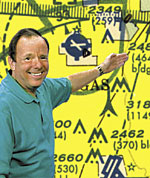 Know how to use the airspace to your
advantage—and stay safe and legal in this complex system. Thoroughly
covers the FAA's international alphabet soup of airspace
requirements—classes A - G, plus TRSAs, etc.—and converts it to
easy-to-understand information. Know how to use the airspace to your
advantage—and stay safe and legal in this complex system. Thoroughly
covers the FAA's international alphabet soup of airspace
requirements—classes A - G, plus TRSAs, etc.—and converts it to
easy-to-understand information.You'll actually see on-screen how the alphabet airspace system is designed—and what each class means to you. You'll learn a foolproof and fun way to remember specifics about each class of airspace. You'll also review other kinds of airspace you should know about—Special Use Airspace, Controlled Firing Areas, Military Training Routes, Temporary Flight Restrictions, Special Conservation Areas, and more. 115 minutes. Click here for more information |
|
Weather Wise A little bit of judgment goes a long
way—particularly when it comes to weather. Learn how to make practical,
real-world use of weather information to interpret the data accurately
and form a mental picture of the conditions affecting your flight. A little bit of judgment goes a long
way—particularly when it comes to weather. Learn how to make practical,
real-world use of weather information to interpret the data accurately
and form a mental picture of the conditions affecting your flight.Understand the dynamics of fog, ice, thunderstorms, pressure patterns, and frontal systems—so you can predict and plan for local conditions. Accurately plan your fuel, so you always land with adequate reserves, even in the strongest headwinds. Know when to trust the forecast and when not to, and how to make smarter decisions in the toughest IFR conditions. 60 minutes. Click here for more information |
|
METAR/TAF Made Easy Good news! If you'd like to unmask the
mystery of the weather codes, you'll breeze through the FAA's METAR/TAF
with this simple-to-understand course. Good news! If you'd like to unmask the
mystery of the weather codes, you'll breeze through the FAA's METAR/TAF
with this simple-to-understand course.In-flight footage and colorful 3-D graphics take you into the weather to vividly illustrate fog, rain squalls and thunderstorms—from the cockpit. Plus, learn an easy trick for remembering each code—with just one viewing, you'll be current! 87 minutes. Click here for more information |
|
Surviving Systems Emergencies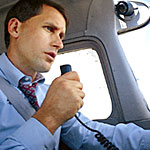 A must for every pilot's aviation
library! Beginning with the most common system failure—Lost COMM—this
life-saving video lesson gives you clear, concise procedures to solve each
problem that may emerge. King's techniques and tips make it easy for you
to remember the procedures during extreme stress. A must for every pilot's aviation
library! Beginning with the most common system failure—Lost COMM—this
life-saving video lesson gives you clear, concise procedures to solve each
problem that may emerge. King's techniques and tips make it easy for you
to remember the procedures during extreme stress.Also included are electrical failures, inoperative primary instruments due to vacuum and pitot-static system malfunctions loss of oil pressure and engine overheating, landing gear malfunctions; brake failure, blown tires, and one of the most startling in-flight events, a door suddenly opening. 109 minutes. Click here for more information |
|
Surviving Your Most Feared
Emergencies Do you ever wonder whether you'd survive
your most feared emergency? King Schools' Emergencies—Volume 1 prepares
you to deal quickly and decisively with the most feared emergencies that
send shivers down every pilot's spine—engine failure, fires, stalls and
spins, and getting lost. Plus when to declare an emergency, and procedures
common to all emergencies. Do you ever wonder whether you'd survive
your most feared emergency? King Schools' Emergencies—Volume 1 prepares
you to deal quickly and decisively with the most feared emergencies that
send shivers down every pilot's spine—engine failure, fires, stalls and
spins, and getting lost. Plus when to declare an emergency, and procedures
common to all emergencies.Even a single viewing can increase your chances of an equal number of successful takeoffs and landings. 64 minutes. Click here for more information |
|
GPS From A to Z (including
approaches!)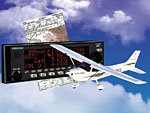 GPS From A to Z, King Schools' new course
featuring the KLN 94, will introduce you to the efficiency of GPS
navigation. You'll learn to create, save, change and use flight plans with
ease. Become a GPS expert, learn how to go beyond "Direct To," and
harness the power you now have with a GPS. GPS From A to Z, King Schools' new course
featuring the KLN 94, will introduce you to the efficiency of GPS
navigation. You'll learn to create, save, change and use flight plans with
ease. Become a GPS expert, learn how to go beyond "Direct To," and
harness the power you now have with a GPS.Plus, you'll learn everything you need for using GPS in the IFR environment ... including how to call up, activate and confidently fly IFR GPS approaches (both standalone and overlay), DPs, and STARs. This course is perfect for both VFR and Instrument Rated pilots. 165 minutes. Click here for more information |
|
How To Avoid Unwanted Adventure!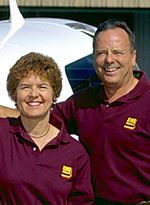 In How To Avoid Unwanted Adventure, John
and Martha deliver a delightfully entertaining and educational program,
filmed in front of a live audience at an FAA seminar. The Kings combine
humor and real-world cross-country experience to present the "universal
lesson" they learned from their years of traveling by light plane
throughout the U.S. to present the seminars that launched King Schools.
75 minutes. In How To Avoid Unwanted Adventure, John
and Martha deliver a delightfully entertaining and educational program,
filmed in front of a live audience at an FAA seminar. The Kings combine
humor and real-world cross-country experience to present the "universal
lesson" they learned from their years of traveling by light plane
throughout the U.S. to present the seminars that launched King Schools.
75 minutes.Click here for more information |
|
Making Your Own Rules—Personal
Minimums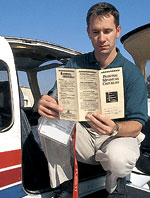 If you've scared someone you care about
while they've been flying with you, you already know they will remember it
forever. Now there's a way to make sure you never scare your passengers, or
if you have, to never do it again. The answer: Making Your Own Rules:
Developing Your Personal Minimums Checklist. If you've scared someone you care about
while they've been flying with you, you already know they will remember it
forever. Now there's a way to make sure you never scare your passengers, or
if you have, to never do it again. The answer: Making Your Own Rules:
Developing Your Personal Minimums Checklist.Developed with the FAA, this video uses a dramatic in-flight scenario to help you design your own checklist for real-world flying. This checklist will give you the tools to make good preflight decisions to assure a safe and enjoyable trip. 69 minutes. Click here for more information |
|
|
Practical Risk Management For Pilots: Protecting You, Your Passengers and Your Pocketbook  If you are like most pilots, flying an airplane is about as good as
it gets—fun, exhilarating, challenging and even empowering—but as you
know, there are risks in flying.
85% of General Aviation Accidents Can Be Prevented—Including Yours! If you are like most pilots, flying an airplane is about as good as
it gets—fun, exhilarating, challenging and even empowering—but as you
know, there are risks in flying.
85% of General Aviation Accidents Can Be Prevented—Including Yours!You can never completely eliminate the risks but in a little over one hour, King Schools' innovative, True Interactivity™ CD-ROM Practical Risk Management course will teach you the procedures and techniques that you need to effectively manage aviation risks. You'll be able to confidently assess and manage risks ... leading to safer flying and more fun in the cockpit. 53 minutes. Click here for more information |
|
|
Practical Risk Management For Reluctant Passengers and Their Pilots: How to turn fear and anxiety into productive participation and fun!  If you’re like many pilots,
then you remember the excitement of taking your spouse, significant other, or close friend flying only to have them clearly dislike
the experience and in many cases swear never to fly again. Now ... for the first time ... there’s a course that can help you turn this fear
and anxiety into productive participation and fun! If you’re like many pilots,
then you remember the excitement of taking your spouse, significant other, or close friend flying only to have them clearly dislike
the experience and in many cases swear never to fly again. Now ... for the first time ... there’s a course that can help you turn this fear
and anxiety into productive participation and fun! Because pilots and passengers often see flying differently, what thrills one can often be very stressful to the other. Even passengers who enjoy flying at first can develop a strong dislike for flying if they feel that things are out of their control. Click here for more information |
|
Flying the Citation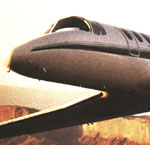 Climb into the cockpit—from pre-flight to
shutdown—for a thrilling high-altitude jet cross-country. Learn the
fundamentals of crew coordination ... how easily you can transition to
jets ... and the value of finely-tuned cockpit procedures. Climb into the cockpit—from pre-flight to
shutdown—for a thrilling high-altitude jet cross-country. Learn the
fundamentals of crew coordination ... how easily you can transition to
jets ... and the value of finely-tuned cockpit procedures.Understand the specific differences between the Citation and propeller-powered airplanes—especially light twins. Passenger briefings, checklists, and emergency procedures are mixed with a healthy dose of aviation humor, as your hosts share the experiences and tips collected during thousands of hours in the air together. 58 minutes. Click here for more information |
|
B727 Systems A comprehensive look at all B727
systems—electrical, fuel, hydraulic, powerplants, fire protection and
more—using the actual panels of a B727-200. A comprehensive look at all B727
systems—electrical, fuel, hydraulic, powerplants, fire protection and
more—using the actual panels of a B727-200.Includes fold-out schematics of the captain's, first officer's and engineer's panels. You'll know the 727 systems thoroughly for that all-important airline interview! Click here for more information |
|
Military Competency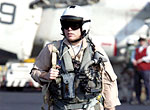 Convert your military experience to
civilian certification! Convert your military experience to
civilian certification!Click here for more information |
|
| FAA Certification Knowledge Test Courses | |
|
Many Flight Simulator pilots would also like to get their FAA pilot
license. To get a license, you must first pass a written FAA Knowledge Test
demonstrating that you understand all of the aspects of aviation
such as aerodynamics, flight instruments, sectional charts, airspace and
weather minimums, communications and radar services (ATC), radio
navigation, flight operations, weather, Federal Aviation Regulations,
cross-country planning, aircraft performance and weight and balance. If you are interested in getting a rating ... or your next rating ... you'll want one of the King FAA Knowledge Test Courses that'll guarantee you'll ACE your test! |
|
 Private
Pilot Private
Pilot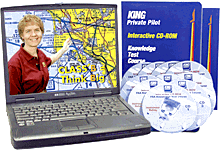 Instrument Rating Instrument RatingCommercial Pilot Certificated Flight Instructor ATP (121) & Dispatcher ATP (135) Flight Engineer Mechanics/General Mechanics/Airframe Mechanics/Powerplant Click here for more information |
|
| FAA Certification Flight Test Courses | |
| In addition to passing a FAA Knowledge Test, you must also take a Practical Flight Test (checkride) with a FAA Examiner. Take this course and you'll be ready to demonstrate that you're a skilled pilot who can fly the required maneuvers and procedures for the rating you want. | |
Private Pilot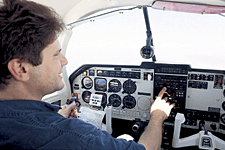 Instrument Rating Instrument RatingCommercial Pilot Certificated Flight Instructor |
|
| Click here for more information | |